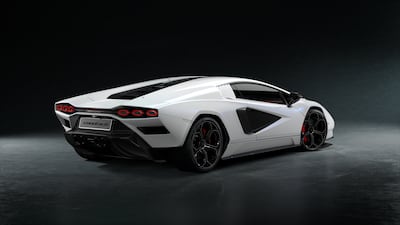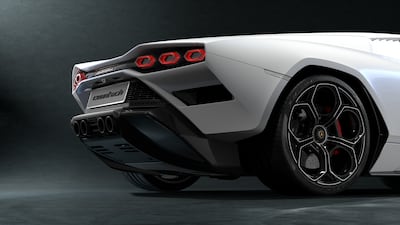If ever there was a car that shook the foundations of automotive design, it was Lamborghini’s edgy Countach. Although its production run spanned 1974 to 1990, fewer than 2,000 units were built. Yet the Countach has possibly featured in more wall posters than any car before or since.
It’s now 50 years since the Countach debuted as a concept at the 1971 Geneva Motor Show, and Lamborghini is celebrating the milestone by rolling out a modern-day take on the yesteryear model.
Same but different
The reimagined Countach LPI 800-4 was unveiled on Friday. Only 112 units of the new-age Countach will be built and sold, with ex-factory pricing starting at about $2.3 million, plus taxes.

Whereas most Lamborghinis derive their names from bulls, the Countach was a rare exception. Pronounced Coon-tach, the term is an expression of surprise and wonder in the Piedmontese dialect – and the spontaneous response of a Lamborghini employee when he first laid eyes on a prototype five decades ago.
The modern-day Countach LPI 800-4 is has Aventador underpinnings, but each body panel is unique to the low-volume special, helping to justify its stratospheric price tag – almost six times that of the donor car.
Lamborghini president and chief executive
Even though the debutant’s inspiration comes from its half-century-old ancestor, Lamborghini is at pains to point out it’s not rooted in the past.
“The Countach LPI 800-4 pays homage to this Lamborghini legacy, but it is not retrospective,” says Lamborghini president and chief executive Stephan Winkelmann. “It imagines how the iconic Countach of the 1970s and 1980s might have evolved into an elite super-sports model of this decade.”
Speed monster

The Countach features Lamborghini’s familiar 6.5-litre V12, but it’s been massaged to eke out 780hp at 8,500rpm, and the torque figure is bumped up to 720Nm.
The Countach also uses the 48-volt hybrid supercapacitor technology that debuted two years ago in the limited-edition Sian. The electric motor kicks in an additional 34hp, boosting the Countach’s total power output to 814hp. Even so, the car wears the designation LP 800-4 (rather than LP 814-4) as it’s a nice round figure.
Lamborghini’s chief technical officer Maurizio Reggiani says the beauty of the supercapacitor system is that it adds only 34 kilograms to the car’s girth, with the result being that the Countach tips the scales at a sprightly 1,595kg (dry weight).
The company quotes a zero to 100 kilometres per hour split of 2.8 seconds, zero to 200kph in 8.6 seconds, and a top speed of 355kph. By comparison, the 25th-anniversary Countach from 1988, the fastest variant of the original car, clocked zero to 100kph in just under five seconds and topped out at 295kph.
Visual cues
The 1970s Countach looked as otherworldly on the road as a spaceship, and the modern-day version captures much of the visual drama of its ancestor. The distinct wedge shape has been reprised, and the slit-like headlamps create a further visual link to its forerunner.
Large triangular Naca air intakes integrated into the doors and rear fenders likewise hark back, as do the prominent air scoops that sit on the car’s wide shoulders.

There are clear Countach design cues at the rear, too, with distinctive three-unit light clusters housed within hexagonal cut-outs. A quartet of large round exhausts thrust out of the lower rear fascia, as they did in the original.
The Countach LPI 800-4’s wheels are also created in the “telephone” style of the 1980s, although these rims (20-inch at the front and 21-inch at the rear) are now shod with Pirelli P Zero Corsa tyres, and housed within them are carbon-ceramic brake discs.
Buyers of the Countach LPI 800-4 will be offered a range of personalisation options, such as visible exterior carbon fibre in the front splitter, as well as around the front window and wing mirrors, engine cover, air intakes and rocker panel.
Lamborghini also points to the moveable air vents, produced by state-of-the-art 3D printing technology, and a photochromic roof that changes from solid to transparent at the push of a button, as proof that this car – despite its historic inspiration – is a “future automotive screensaver for the 21st century”.




